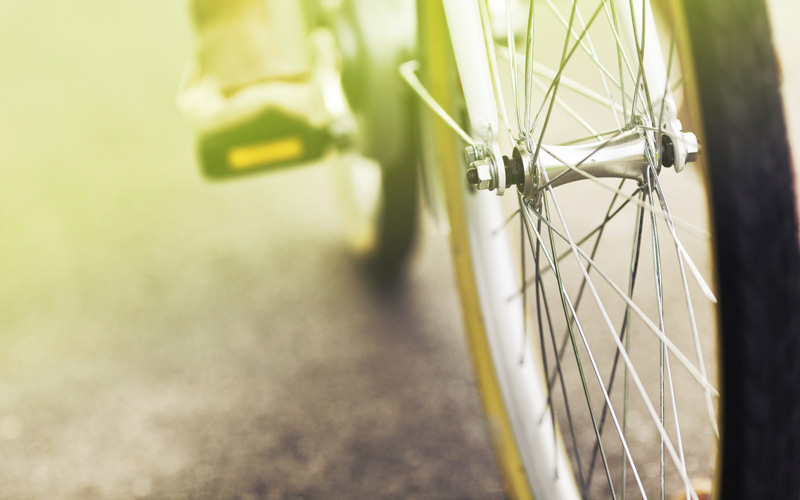
by Elly Blue, writer and bicycle activist
An excerpt from Everyday Bicycling: How to Ride a Bike for Transportation (Whatever Your Lifestyle)
When I started riding a bike, I didn’t make any wardrobe changes until I had to. At the time, I had a professional office job, so I wore skirts, polyester blouses, and jackets. As I biked, my skirts quickly took a beating, with the tighter one splitting up the seams, requiring emergency safety-pin repairs, and the fuller, longer ones getting mangled in the spokes. As these bit the dust, I migrated toward pants and flared, knee-length skirts. Cotton blouses replaced sweat-producing (and smelly!) polyester ones. Jackets tended to be too tight across my shoulders when I reached forward for the handlebars. I started wearing sweaters instead on days when I biked, and as that became more and more days, those jackets ended up getting pushed to the back of my closet and, eventually, out of my life. These changes happened gradually, but in the end, all my clothes were far more comfortable and durable than what I’d been wearing before.
Starting to bike is a bit like getting a new piece of furniture or moving to a new neighborhood. You’ll need to rearrange some things and change some habits to make everything functional and harmonious.
When you switch from driving or transit to bicycling, it’s like you suddenly have a whole different map of your community. Bicycling changes the pace of your life.
Some trips will be much faster by bike. You won’t be stuck in traffic or on the bus, you can take shortcuts, and you won’t have to look for parking. Bicycling can make your commute time more predictable and, in many cases, even faster than driving—particularly when you factor in the vagaries of rush-hour traffic and parking. The same 15-mph speed that feels painfully slow in a car can be exhilarating on a bike.
Other trips will be slower. You might be stuck weaving through backstreets with stop signs every block rather than taking the direct-but-dangerous six-lane arterial that you’re used to driving on. The freeway, instead of making your trip across town magically fast, becomes a barrier that you need to go out of your way to cross.
You might start planning your week’s errands in advance, leaving more time between obligations, and shifting your daily travel patterns to shorten distances and reduce the number of trips you take. You’ll find you spend a few more minutes gathering your things to leave the house—do you have your lights? Is your water bottle full? Is there enough air in the tires? Is it glove weather yet?
But slowing down doesn’t necessarily mean losing time. If you replace a trip to the gym with a half-hour commute each way one day a week, you’ve just saved both time and money. Pedaling your kids to school in a cargo bike rather than driving them adds up to more quality time spent with your family. A ride in the morning can clear your head and make your day’s work more efficient and fruitful.
As your map of the city shifts, so will your life. How fast or slow you want your bicycling life to be is a choice that will help determine what kind of bicycle you ride, what you wear, and potentially even where you work, what you buy, and how you socialize.
Some parts of this will be thrilling, others blissful, others deeply frustrating. Sometimes you’ll find you want to ride fast, others slow. Sometimes it’s not worth it to bike at all. There’s no right and wrong way to do it.
It’s simply your life, by bike.
 Elly Blue is a writer, publisher, and bicycle activist who lives in Portland, Oregon. She writes the Everyday Rider blog for Bicycling. She is the author of Bikenomics and Everyday Bicycling. She also publishes other people’s work about cycling and feminism at takingthelane.com
Elly Blue is a writer, publisher, and bicycle activist who lives in Portland, Oregon. She writes the Everyday Rider blog for Bicycling. She is the author of Bikenomics and Everyday Bicycling. She also publishes other people’s work about cycling and feminism at takingthelane.com




No comments yet.